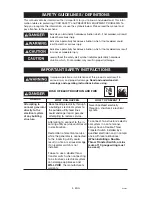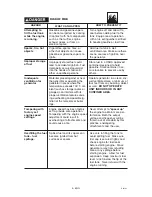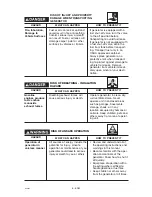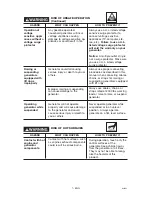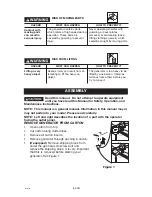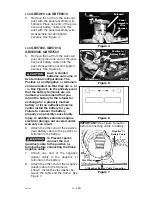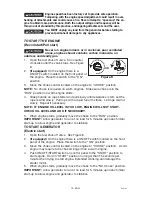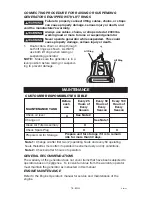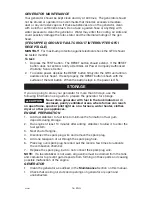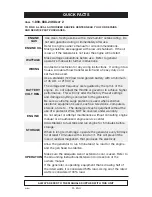
17- ENG
D26563
BATTERY (ELECTRIC START UNITS ONLY)
• Store battery as described by the battery manufacturer.
NOTE
: After storing battery for a long period of time it may lose its charge. If
the battery loses its charge, manually start the engine with the battery connect-
ed. The engine will recharge the battery as it runs.
WATTAGE CALCULATIONS
Never exceed the rated capacity of your generator. Serious damage to the
generator or appliance could result from an overload.
1.
Starting and running wattage requirements should always be calculated
when matching a generators wattage capacity to the appliance or tool.
2.
There are two types of electrical appliances that can be powered by
your generator:
A.
Items such as radios, light bulbs, television sets, and microwaves
have a "resistive load". Starting wattage and running wattage are
the same.
B.
Items such as refrigerators, air compressors, washer, dryer, and
hand tools that use an electrical motor have an "inductive load".
Inductive load appliances and tools require approximately 2 to 4
times the listed wattage for
starting
the equipment. This initial load
only lasts for a few seconds on start-up but is very important when
figuring your total wattage to be used.
C.
Always start your largest electric motor first, and then plug in other
items, one at a time.
NOTE:
On 120-volt loads the maximum starting wattage should
NOT
exceed one half of the rated generator wattage. Example: a 5000 rated
wattage generator = 2500 maximum starting wattage.
IMPORTANT
DETERMINING WATTAGE REQUIREMENTS
Before operating this generator list all of the appliances and/or tools that are
going to operate at the same time. (Then determine the starting wattage
requirements and the running wattage requirements by following example
and/or refer to household wattage calculator.)
1.
First total the running wattage of all appliances and/or tools that will be
operated at the same time.
Running Watts
Starting Watts
Example 1:
Lights =
100
Watts
0
Television
=
300 Watts
0
Slow Cooker
=
250 Watts
0
TOTAL
=650 Watts
0
2.
Next the starting wattages of any appliances and/or tools that will start and
stop during operation.
Running Watts
Starting Watts
Example 2:
Small Refrigerator
500 Watts
2000 Watts
TOTAL
=500 Watts
2000 Watts

